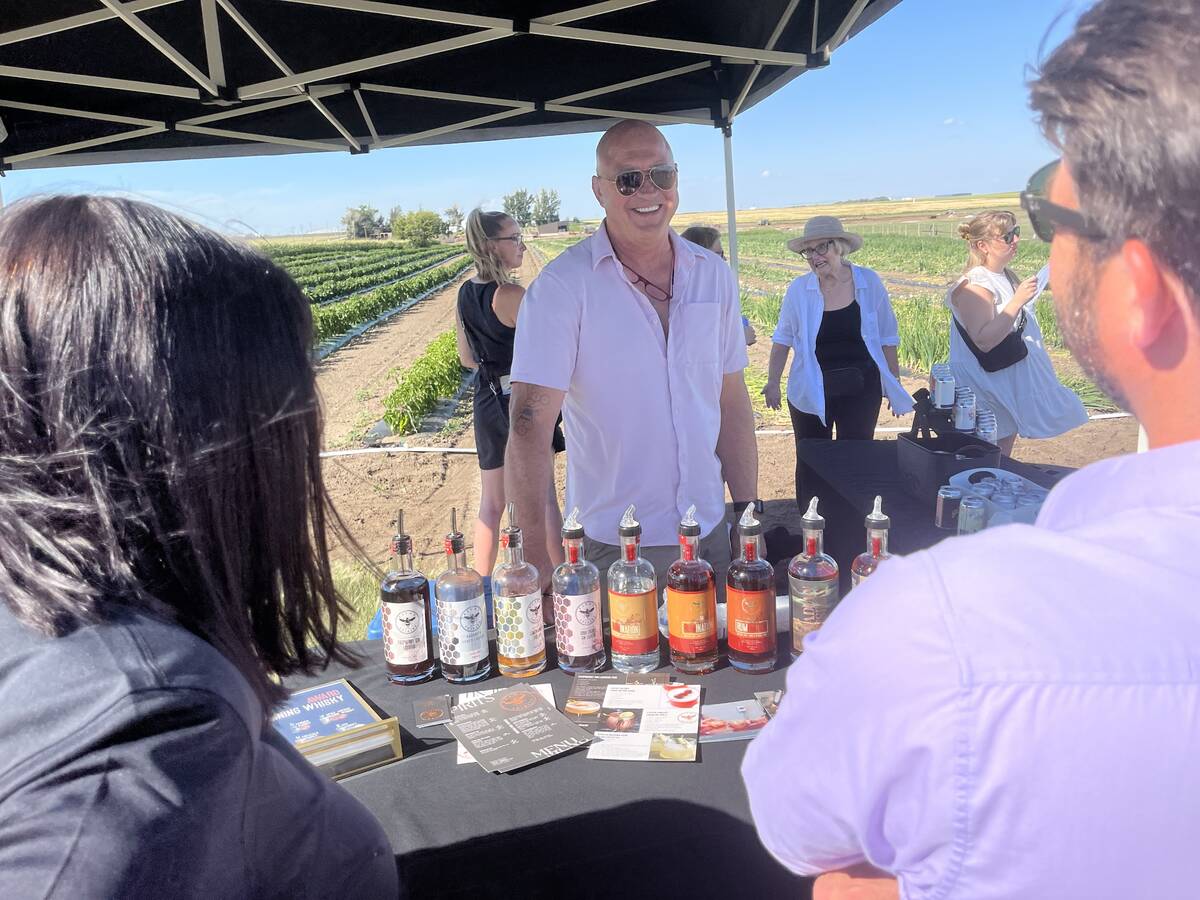A solid farm transfer plan begins with a critical look at the operation’s books. Most approach farm transfers looking at the personal side, principally goals and objectives, said Merle Good of Alberta Agriculture.
“We have to back ’em off that,” he said. “The first thing to look at is viability.”
The tax specialist with the agricultural business branch works on succession planning with farm clients but also leads workshops for lawyers and accountants.
“If you’re going to get your entire living off the farm, you damn near have to gross $200,000 per family,” he said.
Read Also

From farmer to award-winning distiller
Pivot Spirits showcases transition from farmer to distiller with provincial award-winning results in Alberta for Lars Hirch
Without that, off-farm income will be necessary to support the kind of lifestyle the child has grown accustomed to while working off the farm.
He said such reality checks can help those contemplating farm transfers to decide whether the business is worth acquiring from parents.
Good said a look at the business goals and objectives will help determine if they are in sync with what the family wants and whether they are in line with the farm performance over the last few years. Look at gross sales, operating margins and debt retirement, he said.
For every dollar of gross income, Good said 65 cents goes to straight operating costs. That leaves 35 cents for living costs, risk and debt servicing,
and depreciation.
Terry Betker, of the Meyers Norris Penny accounting firm in Winnipeg, said examining key balance sheets, income statements and debt servicing will help show how risky or viable the farm is. Also to be considered is “Junior’s appetite for risk,” he said.
Betker called this first stage assessment and analysis.
Family members need to seek as much information as possible on farm viability, family goals and objectives.
“It shows areas of common thought, vision, goals and areas where they don’t agree,” he said.
Beginning the process is often the hardest part, made more difficult by the “busy-ness” of farmers’ lives today.
“They will get caught up in the day-to-day business of the farm and focus on what’s urgent versus what’s important,” he said.
There is potential for conflict as families work through their individual aspirations. There is also sometimes sensitivity around disclosing financial information to the whole family.
“Succession planning is not a comfortable place to be,” said Betker.
The main questions producers have are who they can use for help and where to start, said Roger Shier of Farm Credit Canada’s AgriSuccess program.
“There are a lot of good resources but in various areas,” he said. “AgriSuccess aggregates information into a location where it’s readily available.”
He recommends two websites as good starting points. The Canadian Farm Business Management Council’s website focuses on succession issues at www.farmsuccession.com, while FCC’s site www.agrisuccess.ca looks at life cycle planning.
These sites are meant to increase awareness of the need for succession planning and provide information to complete the plan. A major farm succession conference is planned for Winnipeg May 9-11.
FCC also hosts seminars on the subject across Canada. These are designed to help people understand why planning is necessary and to provide a list
of resources and experts.
“Then you have some contacts and can follow through and get help in completing the plan,” he said.
Betker advised starting succession planning at least five years before a planned retirement.
Good added that the children, as young adults, should be kept updated on bookkeeping, accounting and retirement funds. It will keep them in the loop and avoid sensitivities around finances later on.
He said it is especially important for the elders to back off and allow the younger partners to gradually take on more management responsibility.
Incorporating the farm is one example of what some families choose to do during transfers, said Good. It offers a lower tax rate and also formalizes business and family relationships.
“A corporation formalizes and tries to understand and separate the business from the family,” he said. “It’s an event that allows everybody to get a piece of information on the table.”
It also forces families to ask hard questions, such as do they want to work together, do they want to be partners and can they change the mindset of the farm to a business and family as business partners?
Creating a written succession plan also formalizes the transfer and offers the younger generation some security for the future.
“Don’t assume you are owed a farm because you’ve helped Dad for 30 years,” he said. Without a written plan, the younger farmer will be “working for something that somebody else has and you have no control over it.”
Good also advised creating an exit plan in case things do not work out. Set up a severance package and know each party’s equity so the younger partner knows what he is leaving with if he gets out in five or 10 years.
He suggested common share growth, where a partial freeze is imposed on the elders’ equity while the younger players have a chance to increase their equity based on their contributions. That way their efforts are reflected in the increasing value of the farm.
“Ten years down the road, they can look at what the company is worth and know what his shares are worth,” said Good.














